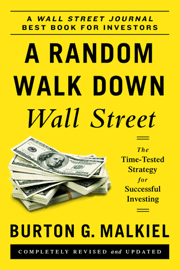I just got this in the mail recently and finally got a chance to read through it. It’s titled “Investing Essentials”, by Kenneth Morris and Virginia Morris. It’s actually barely a book, more like a pamphlet (20 pages long including glossary). It looks like a condensed version of Wall Street Journal Guide to Understanding Money and Investing, by the same authors.
From the cover it is:
“An easy-to-understand, easy-to-use primer that helps to take the mystery out of mutual funds, stocks, diversification, risk/return, liquidity, and tracking performance.”
I’d say that pretty much sums it up. If you are already familiar with the basics, this won’t be of much interest. It would probably be great for the beginning investor or a teenager interested in the markets. Either way, it’s free from Fidelity, just click here and fill out the form. No purchase or account with Fidelity required. Give it as a gift? I’m not sure when I filled it out so I can’t say how fast it comes, but it does come.

 It took me a bit longer than I thought, but I finally wrapped up
It took me a bit longer than I thought, but I finally wrapped up  I just finished up
I just finished up  The Best Credit Card Bonus Offers – November 2024
The Best Credit Card Bonus Offers – November 2024 Big List of Free Stocks from Brokerage Apps
Big List of Free Stocks from Brokerage Apps Best Interest Rates on Cash - November 2024
Best Interest Rates on Cash - November 2024 Free Credit Scores x 3 + Free Credit Monitoring
Free Credit Scores x 3 + Free Credit Monitoring Best No Fee 0% APR Balance Transfer Offers
Best No Fee 0% APR Balance Transfer Offers Little-Known Cellular Data Plans That Can Save Big Money
Little-Known Cellular Data Plans That Can Save Big Money How To Haggle Your Cable or Direct TV Bill
How To Haggle Your Cable or Direct TV Bill Big List of Free Consumer Data Reports (Credit, Rent, Work)
Big List of Free Consumer Data Reports (Credit, Rent, Work)